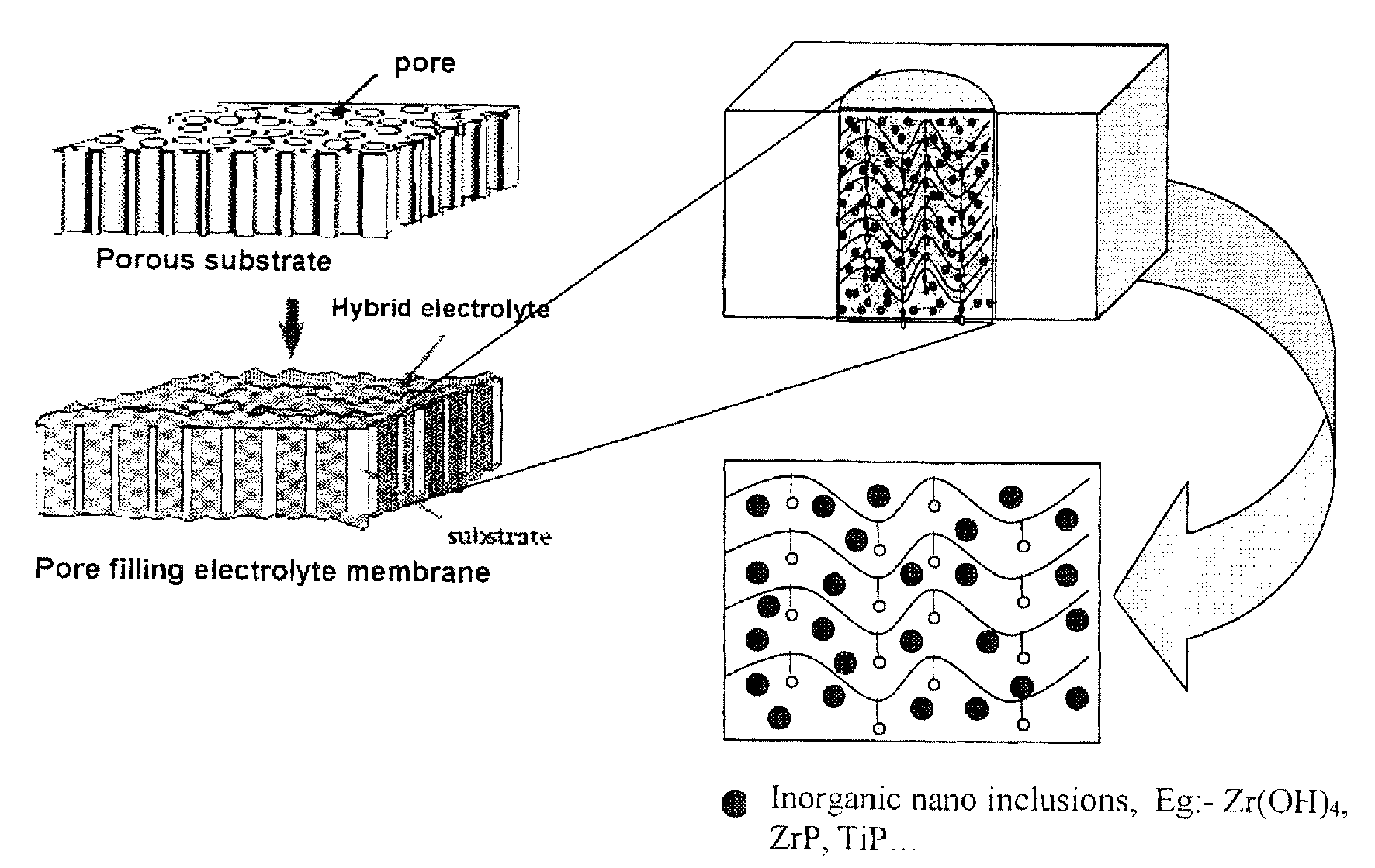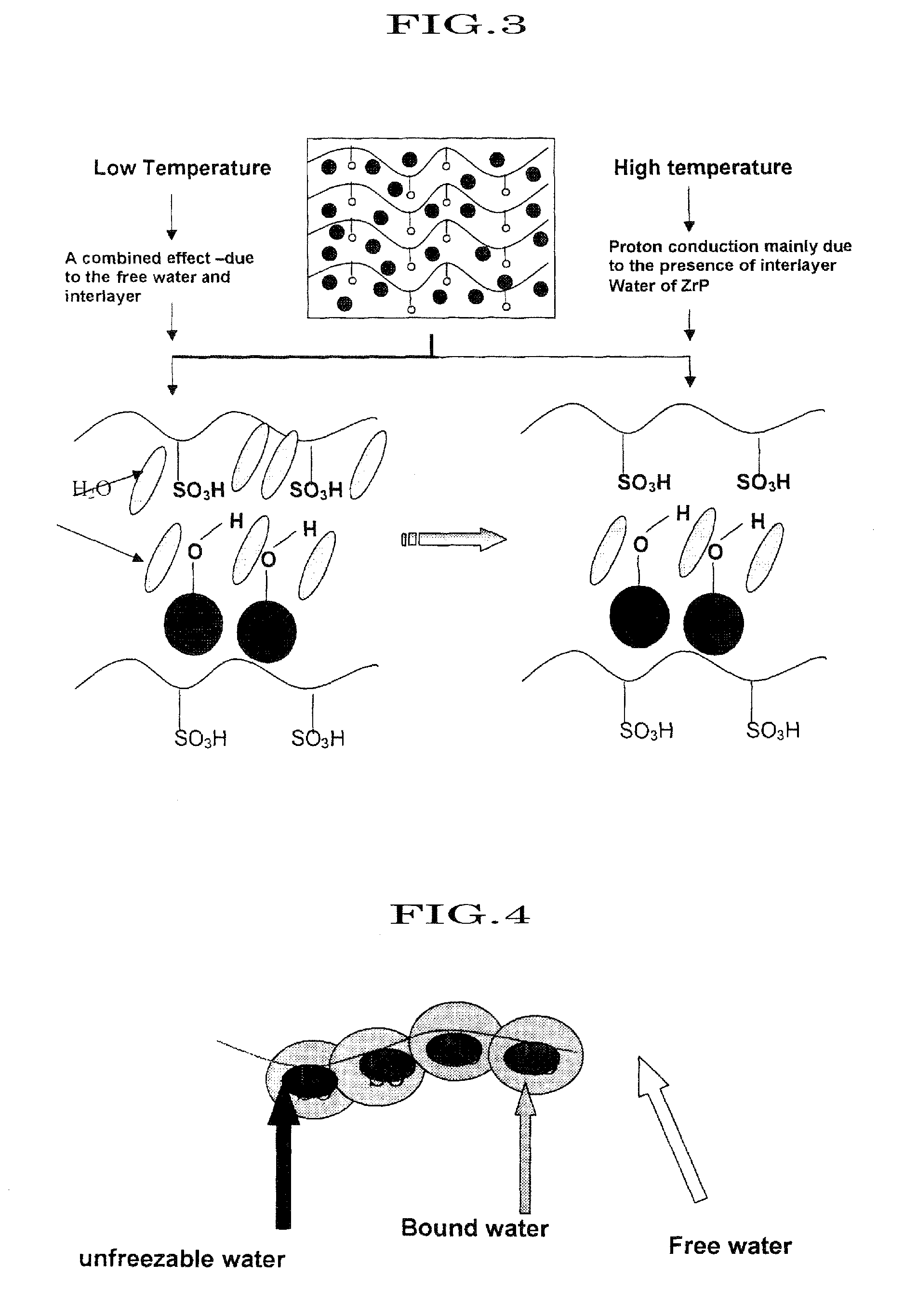Proton conductive hybrid material, and catalyst layer for fuel cell using the same
- Summary
- Abstract
- Description
- Claims
- Application Information
AI Technical Summary
Benefits of technology
Problems solved by technology
Method used
Image
Examples
Example
Example 1
1. Sol-Gel Synthesis of Re-Dispersible Zirconia Precursor Powder
[0362]Zirconia sol was prepared from zirconium alkoxide (Zirconium butoxide): A dilute solution (0.05M) of zirconium alkoxide was first made in isopropyl alcohol. During the sol preparation, a surface modifier (such as Acetyl acetone) was added dropwise to the zirconium alkoxide solution under stirring, and continued stirring for 2 hrs. The metal (M) to surface modifier (L) ratio was 1:2. 1M nitric acid solution was used as the hydrolyzing catalyst, and added to the above system under vigorous stirring, to obtain a clear, transparent, stable zirconia sol. This was further stirred for overnight. Zirconia gel was obtained by evaporating the solvent at 90° C., and was further dried at 90 / 100° C. for one day in an air oven. The dried powder was tested for its dispersion characteristics in organic solvents used for the polymer. The dynamic light scattering experiments for stokes particle size determination were carr...
Example
Example 2
Experiments
[0368]A nano-sized particle has a high surface energy, and it can form agglomerate easily with near particle. It is important that high surface area and particle to particle distance for a proton conductivity network in inorganic solid proton conductors materials. There are necessary to stabilization of particle surface. For this purpose, SPES ionomer is used as a capping agent to nano-hydrated zirconia. They attract each other because of an absorption and / or coordination force as shown in FIG. 10. And the strength of nano-hydrated zirconia and SPES is enhanced by using a reduction agent like alcohol. Because of alcohol is a poor solvent for SPES. The procedure of particle size control is as follows:
Materials:
[0369]Hydrated zirconia;
[0370]SPES ion-exchanged resin;
[0371]DMF (dimethylformamide);
[0372]Alcohol.
Procedure:
[0373]1. Weigh out 0.1375 g of 10 wt % hydrated zirconia solution dissolved in DMF in a vial container with a stirring bar.
[0374]2. Stir the solution...
PUM
| Property | Measurement | Unit |
|---|---|---|
| Temperature | aaaaa | aaaaa |
| Temperature | aaaaa | aaaaa |
| Electrical conductivity | aaaaa | aaaaa |
Abstract
Description
Claims
Application Information
 Login to View More
Login to View More - R&D
- Intellectual Property
- Life Sciences
- Materials
- Tech Scout
- Unparalleled Data Quality
- Higher Quality Content
- 60% Fewer Hallucinations
Browse by: Latest US Patents, China's latest patents, Technical Efficacy Thesaurus, Application Domain, Technology Topic, Popular Technical Reports.
© 2025 PatSnap. All rights reserved.Legal|Privacy policy|Modern Slavery Act Transparency Statement|Sitemap|About US| Contact US: help@patsnap.com



